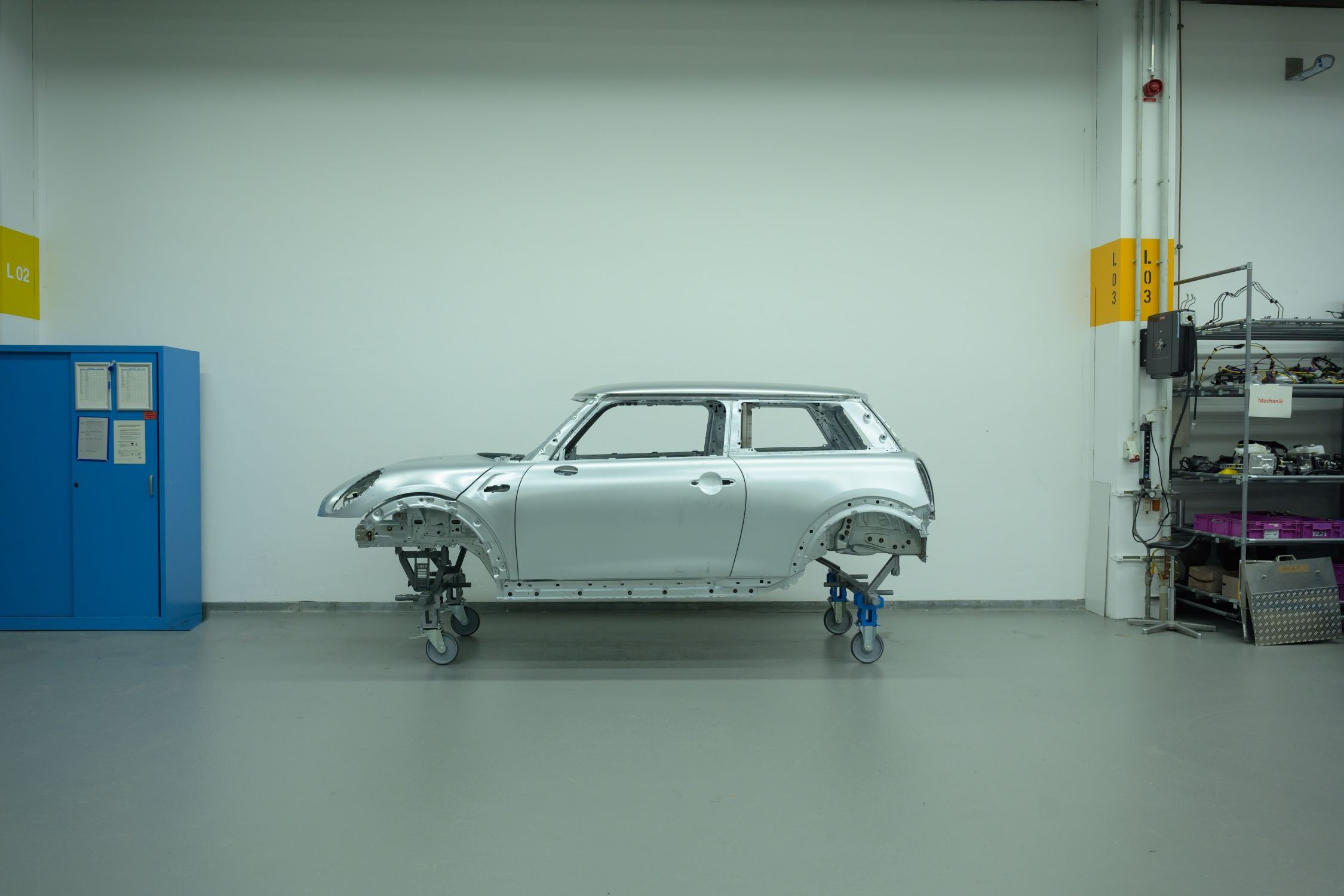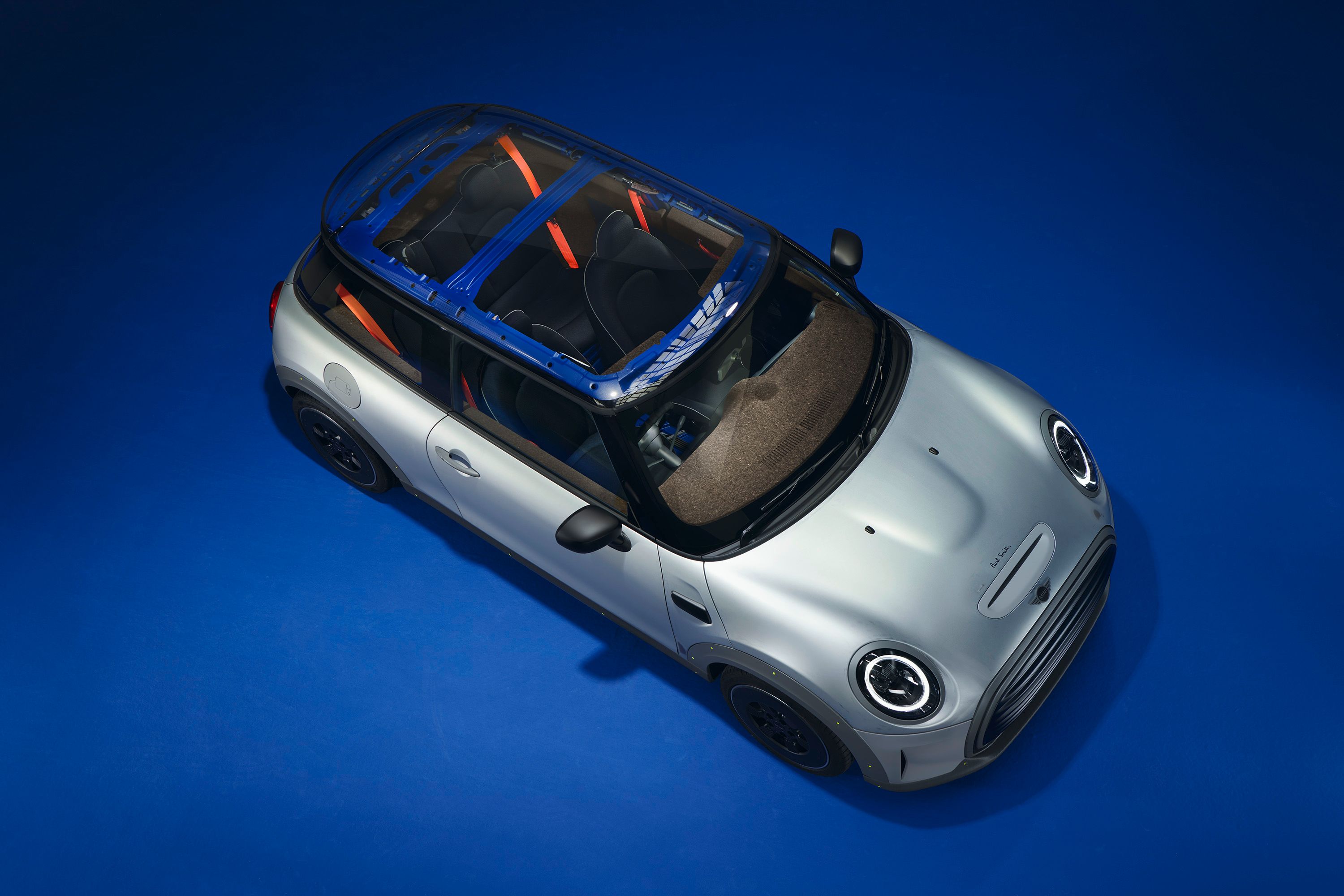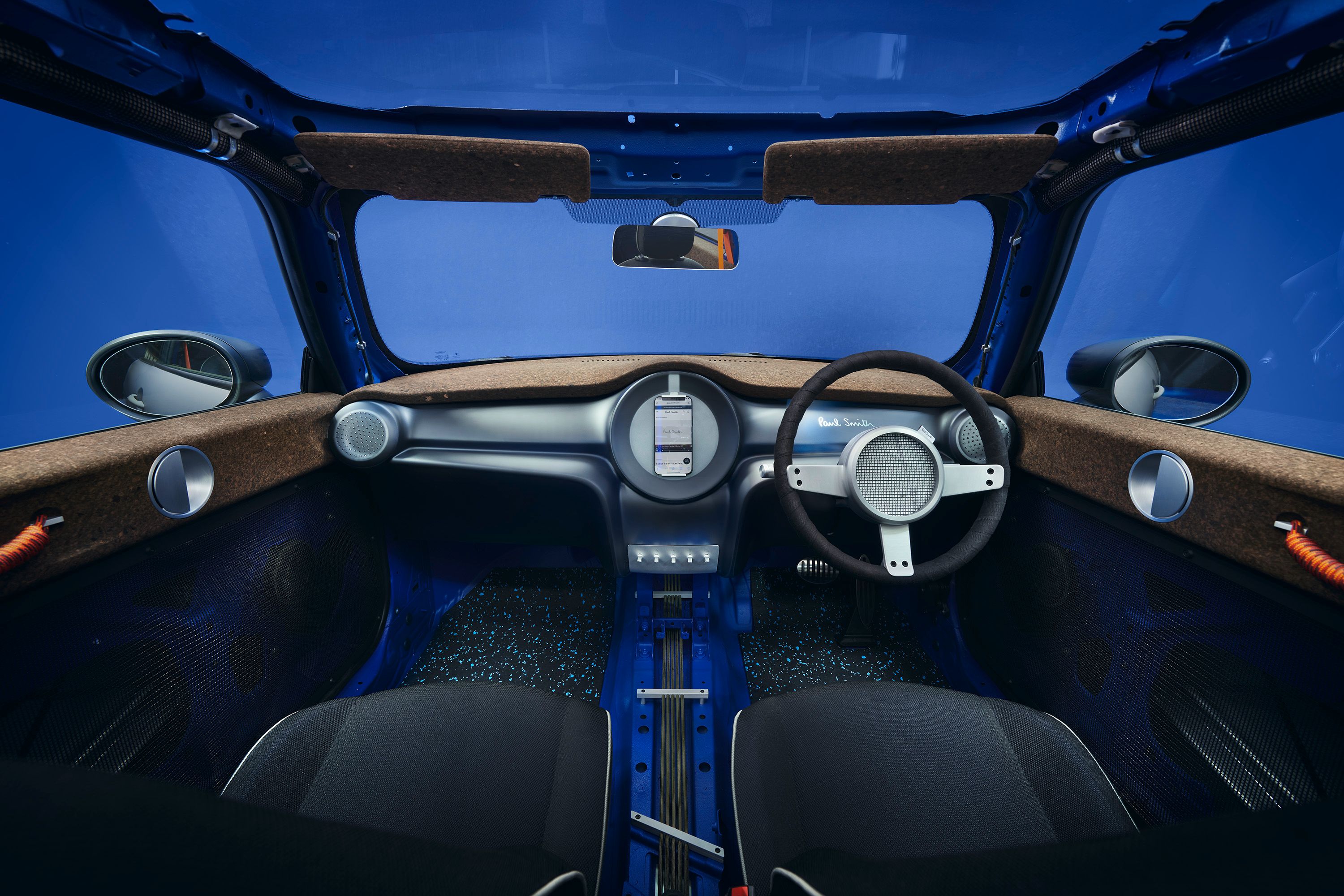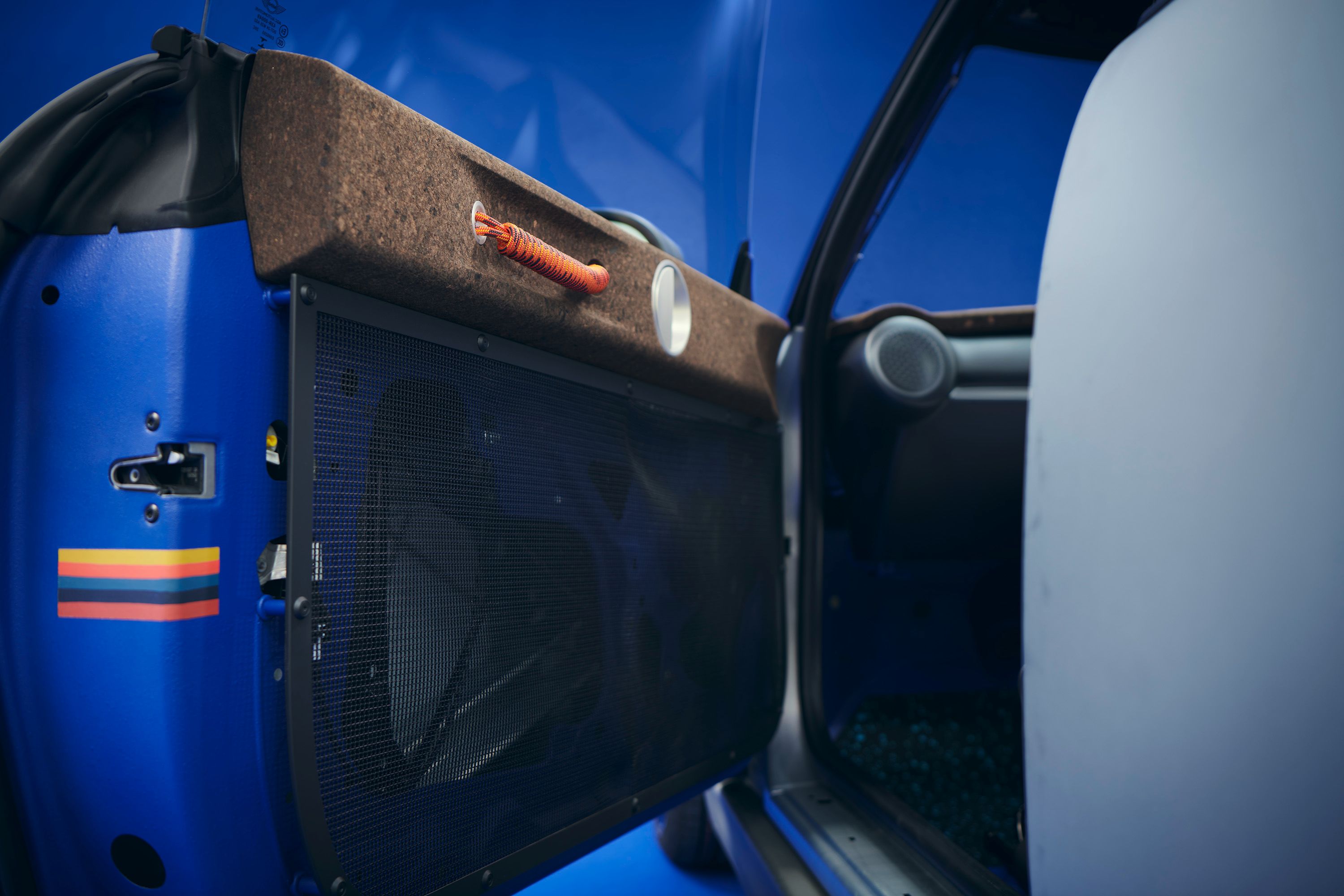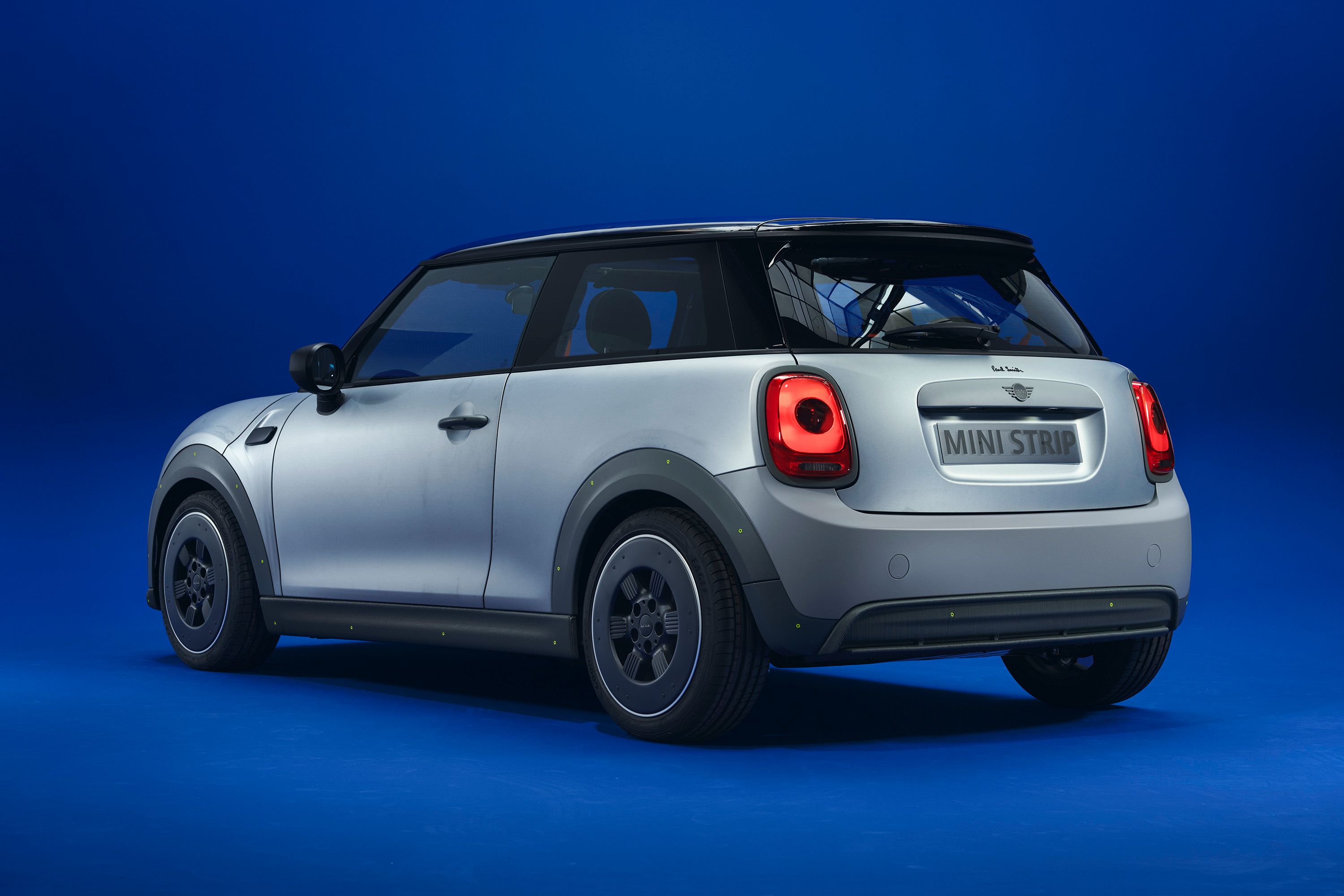Among the various special editions and artistic interpretations that have distinguished the MINI brand’s history, the most recent one in chronological order is the MINI Strip by designer Paul Smith. The car was unveiled in London a few days ago. It is a one-of-a-kind example based on the notion of sustainable design. The goal was to simplify the car as much as possible without giving the impression that it had been stripped down.
Overview
Sir Alec Issigonis, the Turkish-born English automotive designer for the now-defunct British Motor Corporation (BMC), had established the groundwork for a compact city car with a breakthrough transverse-engine and front-wheel-drive configuration back in the mid-1950s.
Little did Issigonis know that his invention would spark both a technological and cultural revolution, let alone the MINI's evolution into the sophisticated vehicle it is today, more than half a century later.
The MINI Strip seen here is the result of a collaboration with the British automaker and designer Paul Smith, who has also previously worked on customizing other MINIs. This time though, their plan was to reimagine this contemporary and modern interpretation to make it as eco-friendly as possible.
What's the Paul Smith Edition All About?
Smith selected an unpainted electric MINI Cooper SE with a galvanized steel body that had only been given a sheet of protective varnish to keep it from corrosion. The focus was to achieve the goal of "simplicity, transparency, and sustainability" with this 100-percent electric MINI Cooper SE.
Exterior elements like grille, hubcaps, as well as other aerodynamic and styling components, have been made using recycled Perspex. This material also encompasses the roof structured that is completely transparent. Other finer details can be found on the charging flap, which now adds a neon green touch, and the design of an electric plug etched on the door.
An Interior With No Excess - A Different Take On Luxury?
Smith adopted an even more extreme and intriguing approach to the notion of MINImalism in the cockpit of the MINI Strip. On the inside, all the frills have been purposefully left out, - with the exception of the dashboard, topper pad, and baggage shelf - making the body itself, a prominent visual aspect of the cabin. The exposed metal is painted in a stunning shade of blue, which contrasts rather well against the silver exterior.
The dashboard is made up of a single huge semi-transparent piece with a smoked glass finish; there is no traditional central instrument, but the driver's smartphone takes center stage as it instantly connects to the car and serves as the media control center. Instead of wood, leather, or carbon fiber, the interior of the MINI Strip is made up of knitted materials, mesh, and recyclable cork as the primary points of contact with the driver.
This MINI comes with exposed bolts to show how readily the car could be disassembled at the end of its useful life. A strap made of rolled mountaineering ropes serves as a closing handle on each door, and its vivid orange hue matches the seat belts. The only physical controls are those of the toggle switches used for the start/stop function and power windows. Finally, the utilization of recycled and environmentally beneficial components underscores the car's long-term viability.
Conclusion
The MINI Strip is a purely visual and conceptual exercise that seeks to display emerging technologies rather than a new perspective on the automobile as a simple machine devoid of excess. It is unlikely that the structural metal on this exhibit would pass the required safety tests in many parts of the world, however, the exercise is an intriguing approach to reconsider the true need for many of the gadgets and luxuries found in today’s cars.



